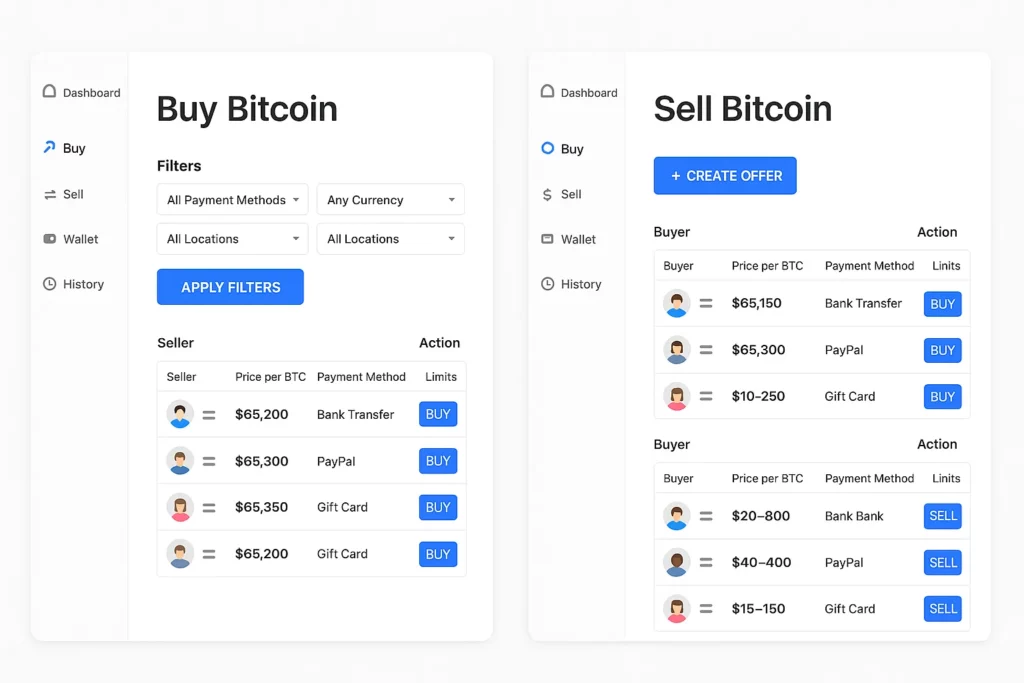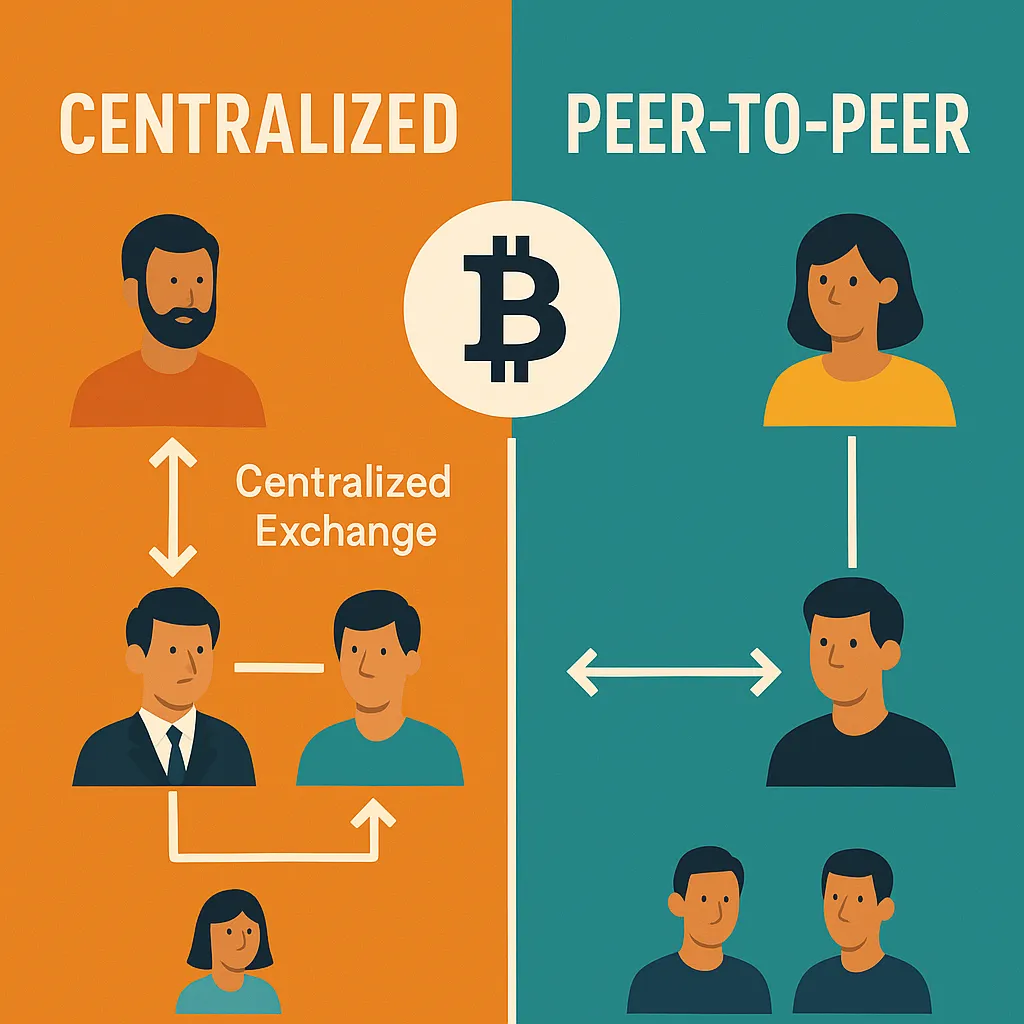Peer-to-peer (P2P) crypto trading is booming in 2025, and for good reason. With rising global adoption of Bitcoin and other digital currencies, people are craving secure, decentralized, and accessible ways to buy and sell crypto—especially in countries where traditional exchanges are restricted or unreliable. That’s where platforms like Paxful have made their mark.
But here’s the twist: Paxful isn’t the only player anymore. Startups, fintech founders, and crypto entrepreneurs are racing to build Paxful clone alternatives with even better features—regional integrations, enhanced compliance, mobile-first design, and killer user experience.
If you’re a tech entrepreneur eyeing the crypto exchange space, this blog is your no-fluff roadmap to building your own Paxful clone platform—faster, smarter, and with more growth potential than ever.
My Take on the Paxful Boom
Back in 2021, I helped a friend in Nigeria launch his crypto wallet business. We saw firsthand how platforms like Paxful and LocalBitcoins were empowering users—but also where they were falling short: slow support, clunky design, limited payment options.

That’s when it hit me—there’s massive opportunity in building a custom P2P platform that fills these gaps, especially with localization and innovation.
So, if you’re asking “how do I build a Paxful alternative that actually stands out?”—keep reading. This guide breaks it down from tech stack to launch checklist.
Step-by-Step Guide to Building a Paxful Clone Alternative
1. Understand the Core Features of Paxful
Before you build anything, you need to know what you’re cloning—and what you’ll improve.
Must-have features in a Paxful clone:
- Buyer-seller matching engine
- Escrow system to hold crypto during transactions
- KYC/AML compliance module
- Dispute resolution system
- Wallet integration (multi-coin or Bitcoin-only)
- Chat functionality for trade communication
- Admin panel for monitoring

Don’t just copy—improve on usability, regional payment integrations (like UPI, M-Pesa, PayTM), and fraud detection.
2. Pick the Right Tech Stack
The backend of your platform needs to be scalable, secure, and fast. Here’s a typical modern tech stack for a P2P exchange:
- Frontend: React.js or Next.js (responsive, fast-loading)
- Backend: Node.js or Laravel (efficient APIs)
- Database: PostgreSQL or MongoDB
- Blockchain Integration: Web3.js or BitcoinJS
- Hosting: AWS, DigitalOcean, or Google Cloud
- Wallet API: BlockCypher, BitGo, or custom hot/cold wallets
Make sure your architecture supports modularity so you can plug in new coins, payment methods, and compliance features as you scale.
3. Integrate an Escrow Smart Contract

This is where trust is built. Escrow holds the crypto until the buyer confirms payment. You can go with:
- Manual Escrow (server-based): Easier to build, more admin control.
- Smart Contract Escrow (decentralized): More secure, but requires blockchain development.
Pro Tip: Even if you go centralized at first, architect your code so you can switch to decentralized escrow later.
4. Build a KYC & Compliance Layer
Even P2P exchanges need to follow regulatory rules, especially in India, Nigeria, and the U.S.
Plug in services like:
- Sumsub
- Jumio
- Trulioo
Let users upload IDs, selfies, and proof of address. Automate reviews where possible but always keep a manual override option.
5. UX/UI: Make It Foolproof
Crypto is still confusing for the average user. Your design should feel like a mobile wallet, not a Wall Street terminal.
Design Tips:
- Easy onboarding with guided tutorials
- Search by location, payment method, and rate
- Chat and notifications inside the app
- Light/dark mode for comfort
- Mobile-first design (80%+ users will use mobile)
Remember: people trust what they understand.
6. Add Multiple Payment Methods
This is where localization wins. Paxful supports over 300 payment methods. You don’t need that many, but cover popular regional options:
- India: UPI, PhonePe, Paytm
- Africa: M-Pesa, bank transfers, Airtel Money
- LatAm: PIX, MercadoPago
- US/Europe: PayPal, Cash App, SEPA
Build a dynamic payments API so you can add more later without rewriting core logic.
7. Focus on Security First
A crypto platform is a honey pot for hackers. Security is non-negotiable.
Security Best Practices:
- Two-factor authentication (2FA)
- Cold wallet integration
- End-to-end chat encryption
- DDoS protection and firewalls
- Bug bounty program or white-hat audits
Also: hire a third-party audit firm before you go live.
8. Launch MVP and Iterate Fast
You don’t need to be a Paxful-size platform on Day 1. Build your Minimum Viable Product (MVP) with just:
- Bitcoin support
- 5 payment methods
- Basic KYC
- Dispute and chat
Then test with a closed group of traders. Use their feedback to refine UI, fix bugs, and optimize flow.
Paxful Clone vs Building From Scratch
| Feature | Paxful Clone Script | Custom Platform |
| Speed | Faster (30–45 days) | Slower (2–4 months) |
| Cost | Affordable ($3k–$10k) | High ($15k–$50k+) |
| Flexibility | Moderate | High |
| Security | Depends on vendor | Custom-secured |
| Scalability | Medium | High |
If you’re in a hurry, a customized clone script might be your best bet—just make sure you choose a reliable vendor and audit every line of code.
Monetization Ideas for Your P2P Crypto Exchange

Building a platform is one thing, making money is another. Here’s how to monetize:
- Transaction Fees: 0.5%–1% per trade
- Featured Listings: Boost visibility for power sellers
- Ad Banners: Optional for extra revenue
- Premium Support: For verified users and businesses
- Affiliate Program: Reward users for referrals
Final Thoughts: Is a Paxful Clone Worth It?

Absolutely—if you do it right. There’s room in the market for platforms that are:
- Localized
- User-friendly
- Compliant
- Built with security-first thinking
Whether you’re launching in India, Africa, or Latin America, a well-built Paxful alternative can help you tap into the fast-growing P2P crypto economy—without reinventing the wheel.
So what are you waiting for?
FAQs: Paxful Clone Development
Q1. Is it legal to launch a P2P crypto exchange in India?
Yes, as long as it complies with KYC/AML guidelines and does not violate RBI crypto-related notifications.
Q2. How much does it cost to build a Paxful clone?
Anywhere from $5,000 for a script to $50,000+ for a custom platform, depending on features, team, and security needs.
Q3. What makes a Paxful clone different from other crypto exchanges?
It’s peer-to-peer, not centralized. Users trade directly, with escrow protecting both parties.
Q4. Can I support multiple cryptocurrencies?
Yes, but it’s smart to start with Bitcoin or USDT and expand based on demand.
Q5. Do I need a license to operate?
In most regions—yes. You’ll need to register as a crypto exchange or payment processor depending on local laws.
Q6. Where can I get a reliable Paxful clone script?
Look for providers with transparent demo access, post-launch support, and clean, audit-friendly code. (E.g., Miracuves Solutions, etc.)







